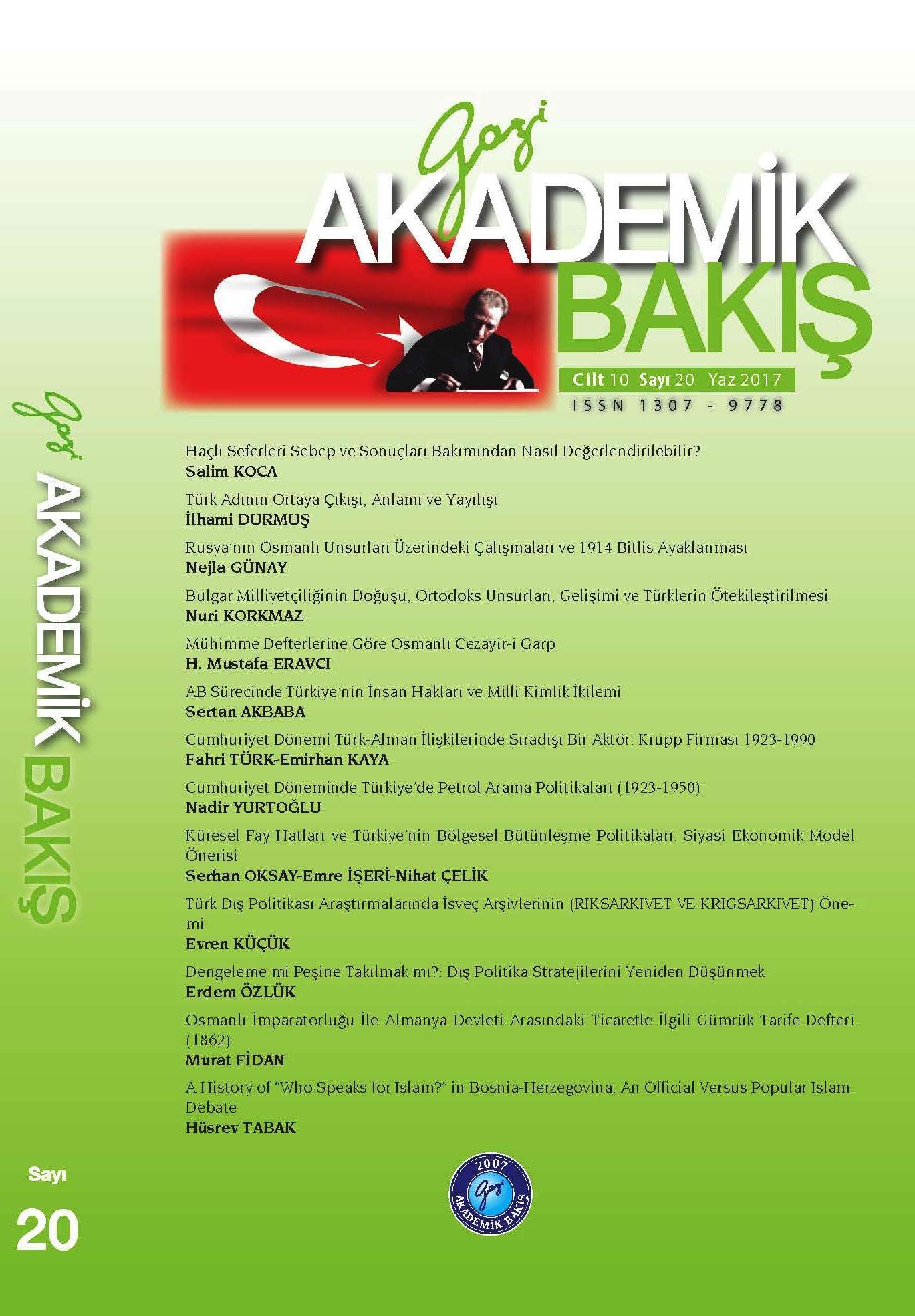Türk Adının Ortaya Çıkışı, Anlamı ve Yayılışı
The Appearance of the Word “Türk”, Its Meaning and Its Pervasion
Author(s): İlhami DurmuşSubject(s): Middle Ages, Lexis, Semantics, Turkic languages
Published by: Gazi Akademik Bakış
Keywords: Türk; Kök-Türk; Oguz; wolf; to reproduce;
Summary/Abstract: The word “Türk” had appeared in the written documents from the Kök- Türk period. In those documents the word was written either in one- syllabic form as “Türk” or in two- syllabic form as “Türük.” But in time the one-syllabic form has become popular. The word “Tu-kue” in the Chinese sources had been used to denote “Türk” and the words “Thrak”, “Targita” or “Tyrkae” in the Grek sources; the words “Turukka” or “Turuska” in the Indian sources; the word “Turki” as a country name in the pro-Asian cuneiform sources; the word “Turukku” in the Asyrian cuneiform sources and even with the word “Togharma” in the Old Testament. It has been put forth that the word “Türk” was produced from the verb “türemek” which means to reproduce and that it is connected with the words “türe” which means justice and “töre” which means ethical principles. It was used to mean “yaratılmış” (=created) and “yaratık” (=creature). The common belief of the ancient Turkish cultural environment that the Turks had descended from the wolf confirms the above mentioned meaning. Besides, the archeological description that a wolf lactating a human child also supports this meaning. At first the word “Türk” had been used both in singular and plural forms. It is thought that in time it gained the meanings such as “sound”, “powerful” and “strong”. Today the word “Türk” is used both to describe a person and nation.
Journal: Gazi Akademik Bakış
- Issue Year: 10/2017
- Issue No: 20
- Page Range: 37-47
- Page Count: 11
- Language: Turkish

